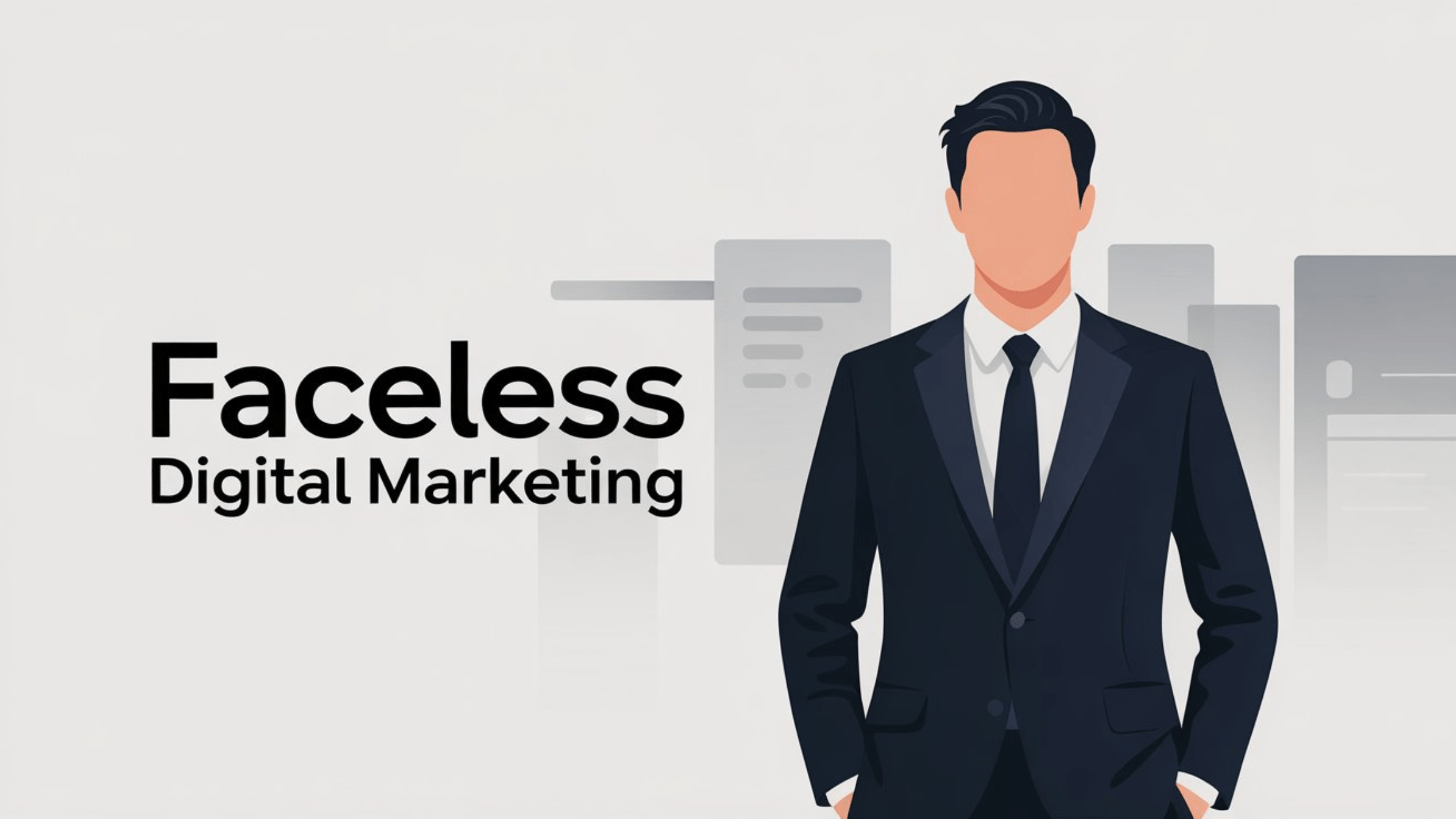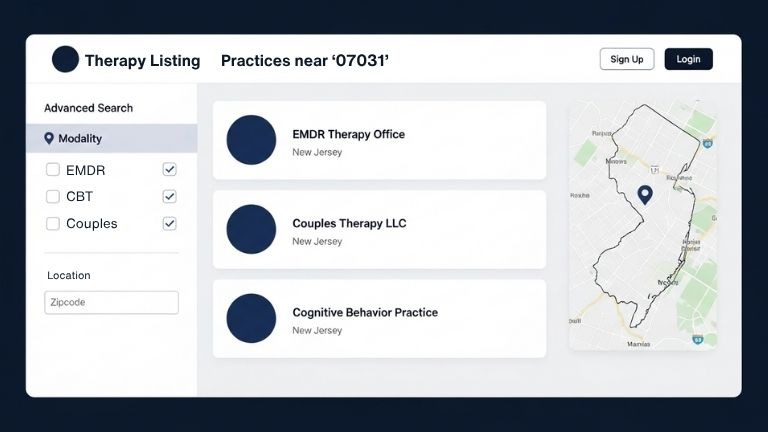Listen to this article:
Faceless digital marketing is a strategy to grow your online content without putting yourself front and center. In this post, we’ll discuss building trust and authenticity through carefully curated branded content, human-centered stories, and mission-driven messaging, without using your face as the image of the brand.
Learn why the balance between using automation and AI tools and maintaining intentional human touch points is important to ensuring your audience still sees the people behind the brand.
Table of Contents
- What is Faceless Digital Marketing?
- The Importance of Trust in Faceless Digital Marketing
- Should You Create Faceless Digital Marketing?
- Great Faceless Digital Marketing Use Cases
- Faceless Digital Marketing Best Practices
Faceless digital marketing is attractive for three reasons:
- It’s inexpensive.
- It’s scalable.
- It’s lifelong.
If you intend to scale your consultancy business–or transition from a freelancer to an agency owner–you should consider how you intend to develop a faceless extension of yourself that illustrates your professional values.
Faceless digital marketing allows you to scale your content while building trust and credibility among prospective audiences. The content you create, when curated effectively, ensures the principles by which you founded your business maintain a presence in all your online content–even when it’s not your face advocating for your brand.
Leading digital marketing and SEO expert Neil Patel is a great example of a freelancer who has built a strong name and personal reputation for himself. Upon founding NP Digital, his marketing agency, he leveraged the trustworthiness and success of his personal brand to serve as the foundation for the agency’s brand reputation.
Still very much a spokesperson for the agency, NP Digital’s online content incorporates a mix of Neil as head spokesperson, but with faceless, branded content as well.
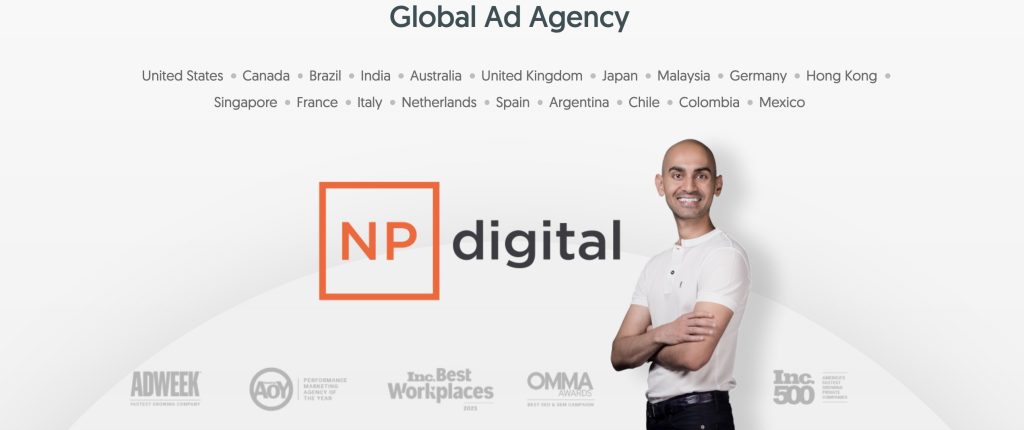
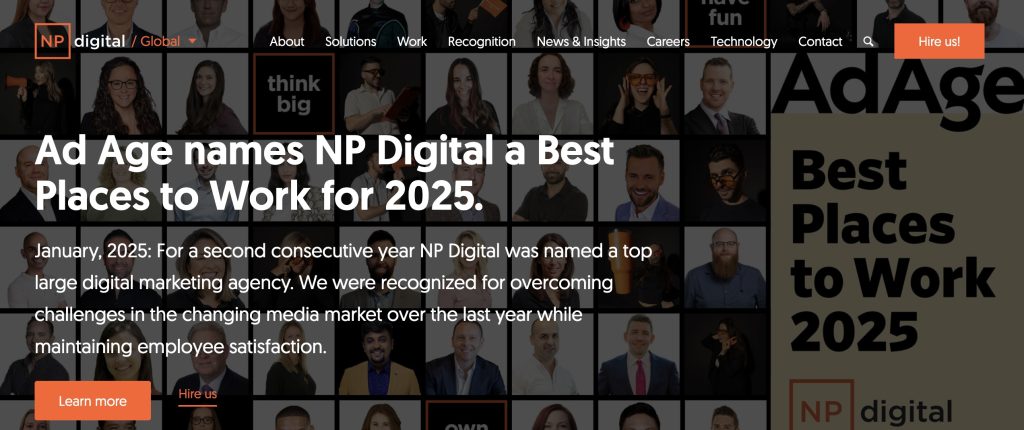
People don’t trust companies; they trust other people. To elicit trust and loyalty from prospective clients using faceless content, your mission and values should be showcased through the quality and authenticity of the human stories and interactions people experience when engaging with your marketing.
What is Faceless Digital Marketing?
Essentially, it’s the method of promoting a company and its services without relying on you to be its spokesperson.
If you’re a freelancer, converting your business into an agency, you might leverage a logo or logotype, established brand colors, and font styles to serve as a visual identity for your brand. The important piece here is that you are creating a brand identity without your image.
Common examples of faceless digital marketing include:
- Blogs and SEO online content without a named author.
- AI-generated animations or motion graphics explaining products or services in place of a person.
- White-label content that businesses publish under their company name.
- Automated email sequences with brand-focused messaging and without a person’s signature or sign-off.
- Social media content that prioritizes visuals and storytelling over personal appearances.
Effective, faceless digital marketing requires careful attention. Leveraging your brand identity and the characteristics that define your company is not enough to elicit trust from prospective clients. You will need to return the human element that you removed from the brand identity to engage in faceless digital marketing.
Faceless marketing is not the promotion of an ethereal entity that exists without leadership; it’s simply marketing without a spokesperson, but it’s not inhuman. References to customer or client experiences, workplace activities, and images of human interactions are vital to incorporate into your faceless marketing.
The Importance of Trust in Faceless Digital Marketing Success
Faceless digital marketing isn’t new.
Companies have long used mascots and slogans in place of individuals to represent their brands. For example, Michelin has the Michelin Man, and Geico has its animated gecko. These mascots allow companies to build recognizable brands without tying it to a specific person.
With the rise of AI and video cloning tools, faceless strategies have evolved. Businesses are excited to incorporate AI-generated content and automated customer processes into their daily operations and sales and marketing efforts when interacting with prospective clients. What companies save in speed and efficiency when engaging with customers online, they lose in their customers’ trust.
A 2023 study by McKinsey found that businesses using AI-powered chatbots and automation in their marketing saw a 30% increase in engagement compared to those relying solely on human interaction. However, these companies also reported that maintaining a balance between automation and human touchpoints was crucial to their success.
In a 2025 Global Consumer Trends Report by research leader Qualtrics, the organization noted that consumers have much higher expectations of businesses in 2025 than in previous years when it comes to the quality of the information delivered.
61% of research respondents from the survey (of a 23,700 sample size) listed trust in the information provided to them during business interactions as a priority (Qualtrics 2025). This means eliciting trust in the quality of your content in your faceless digital marketing is more important than ever. Not an easy feat when you’re without a trustworthy spokesperson.
Should You Create Faceless Digital Marketing?
The answer is always “it depends.”
If your marketing strategy centers around developing and publishing content across a variety of platforms on various topics in a relatively short period of time, then faceless marketing can help you scale your content repository quickly.
Plus, with faceless marketing, you don’t need to coordinate with your spokesperson’s schedule to consistently develop fresh content.
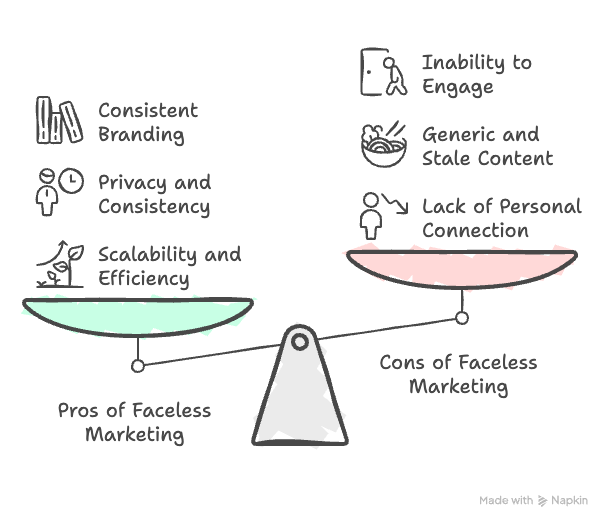
Pros:
- Consistent Branding: AI and automation tools ensure content is published regularly, reducing the risk of inconsistent branding or the need to fit someone’s schedule.
- Privacy and Consistency: Small business owners and consultants who prefer to stay behind the scenes can maintain brand visibility without personal exposure.
- Scalability and Efficiency: Automated content and scheduling tools allow small businesses to scale marketing efforts efficiently and cost-effectively.
Cons:
- Inability to Engage: Prospective clients may hesitate to engage with your company if they seek out a human interaction or touchpoint and are met with more automated tools.
- Generic and Stale Content: AI-generated content can come across as stale and lack the personality of an actual person, which is sometimes necessary, especially in the last few steps of the sales cycle.
- Lack of Personal Connection: Without a visible spokesperson, it can be harder to establish trust unless your marketing incorporates stories from client experiences.
The deciding factor on whether you should engage with faceless digital marketing comes from your marketing strategy. Read ‘The Planning Process: Is Your Business Marketing-Ready?’ to learn about the first steps to take before launching your faceless digital marketing campaigns.
Faceless Digital Marketing Use Cases Across Industries
More often than not, you can witness faceless digital marketing in a variety of campaigns across industries:
Technology/Software: Many technology companies rely on faceless marketing by leveraging their brand or mascot in product demos, explainer videos, and AI-driven customer support.
Apple is a great example of a technology company that leverages faceless marketing by focusing on content curated using the latest iPhone’s flawless camera.
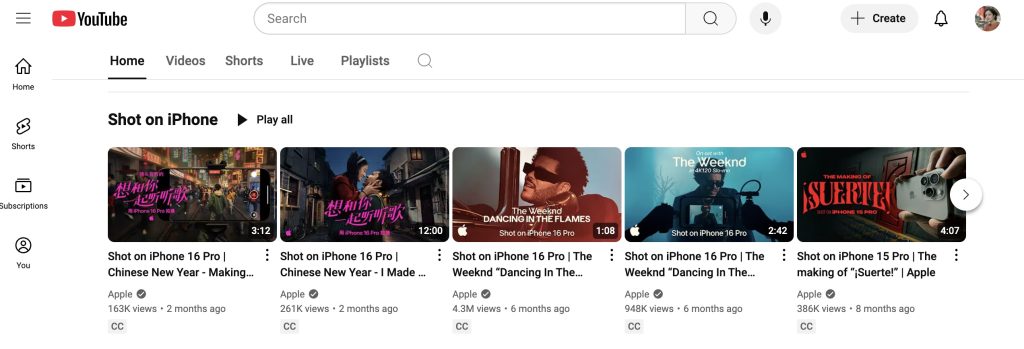
Education: E-learning platforms such as Udemy and Coursera rely on faceless marketing through automated course recommendations, AI-generated tutoring support, and content-driven SEO strategies.
But you’ll notice their websites include images of people to maintain a human element in their marketing.
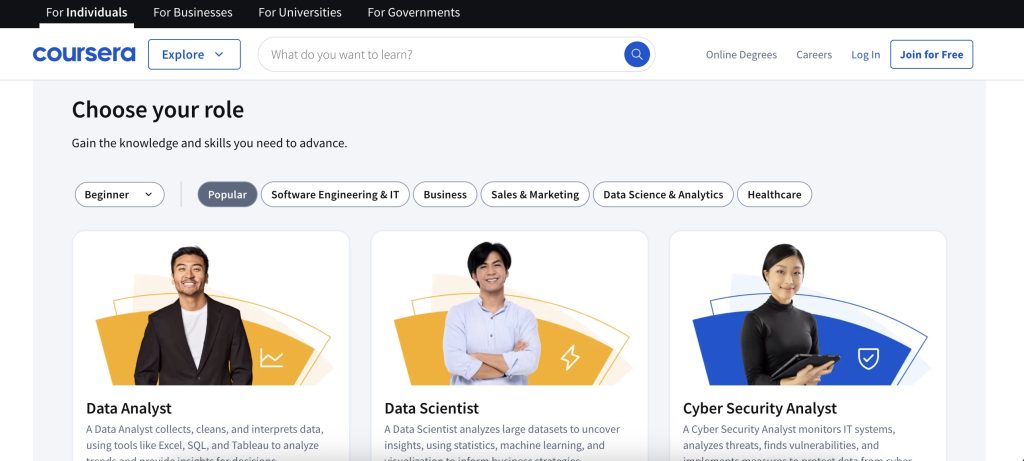
Professional Services: Many legal, financial advisory, and consultancy firms use their brand identity or a mascot in long-form content like e-books, whitepapers, and automated lead-nurturing email campaigns to attract and retain clients.
The leading law firm Kirkland & Ellis is a great example of a law firm that posts content focused on their employee engagement and branded, faceless educational content.
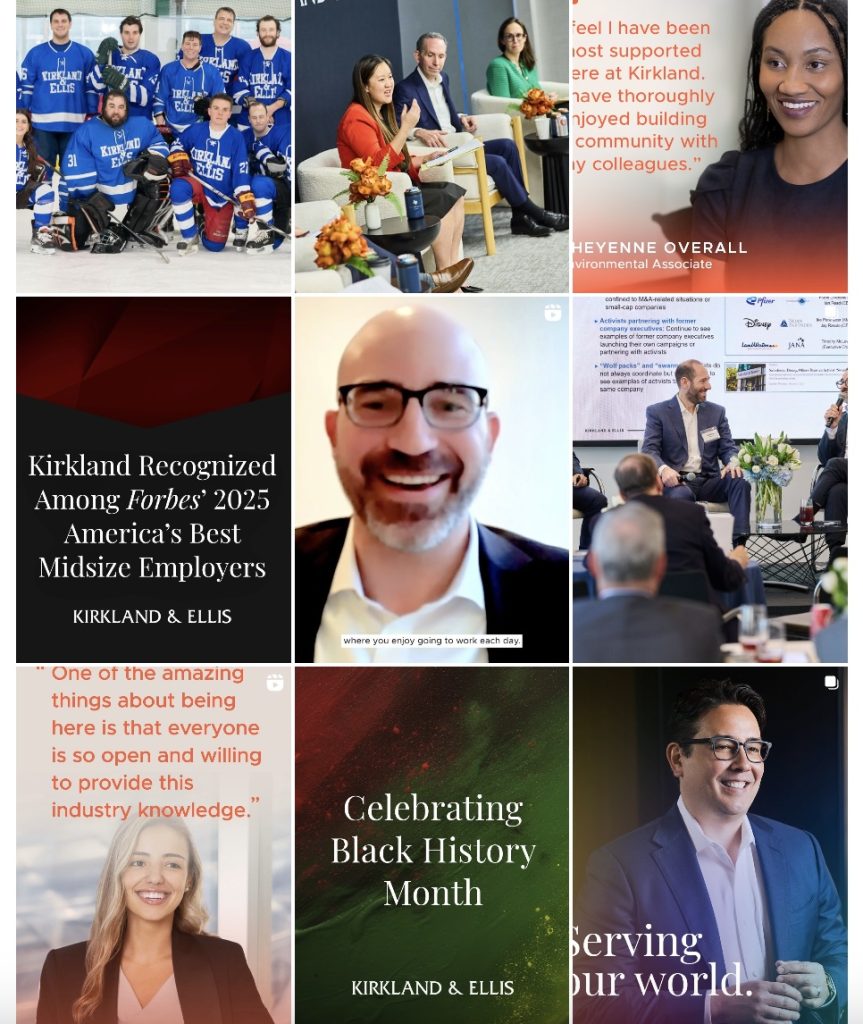
Best Practices for Balancing Facelessness with Human Connection
To ensure your faceless marketing campaigns are effective, I recommend conducting the following:
- Develop a Distinct Brand Voice: Even if your freelance or consultancy business doesn’t leverage a personal brand, you should establish a consistent tone and messaging that resonates with your online audiences.
- Use High-Quality Visuals: Since faceless brands rely on design, consider investing in professional graphics, animations, and videos to help your marketing stand out.
- Incorporate Human Touchpoints: Always include some human interaction, whether through personalized customer service portals, live Q&A sessions on webinars, or behind-the-scenes updates.
- Refine AI-Generated Content and Automation Tools: Automated content should never be published as-is. Ensure all AI-generated blogs and social posts are reviewed and refined for authenticity of your voice and messaging.
- Focus on Community Engagement: Build trust through user-generated content, testimonials, and interactive experiences that highlight customer success stories.
- Prioritize SEO-Driven Content: Create educational blogs or resources targeting long-tail keywords relevant to your audience’s pain points. This will help you rank where content featuring people is reviewed in an algorithm (like on Instagram).
Getting It Right: Choosing the Best Approach for Your Small Business
Faceless digital marketing can be an incredibly effective tool to create a large amount of content that builds trust, but it’s not for everyone. So long as you can effectively integrate human elements and touchpoints throughout the customer experience, your faceless content will engage the audience.
Consider testing different image and text combinations to find the right messaging that resonates across your social media, email, and blog articles. By balancing automation tools with human engagement, you can ensure the principles of your professionalism and trustworthiness translate to your faceless content.
Check out the GrowthFuel Blog for additional resources on small business marketing.

